ADVERTISEMENTS
Lumi Inkodye
light sensitive Vat dye
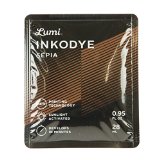


ADVERTISEMENTS
ADVERTISEMENTS
ADVERTISEMENTS
The Surface Designer's Handbook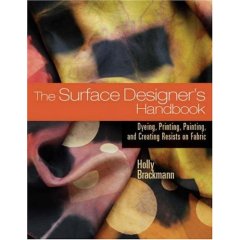
by Holly Brackmann
detailed recipes for many types of dye including vat dyes and Inkodyes

The Ashford
Book of
Dyeing
by Ann Milner
an excellent guidebook for all levels, from beginners to advanced dyers, using all sorts of dye, including vat dye
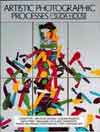
Imagery on Fabric: A Complete Surface Design Handbook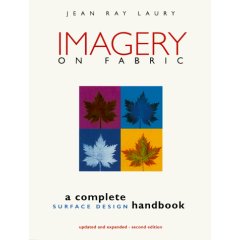
by Jean Ray Laury
Chemistry and Application of Leuco Dyes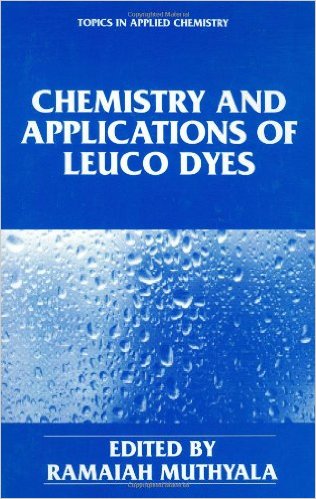
edited by
Ramaiah Muthyala
A Handbook of Indigo Dyeing
by Vivien Prideaux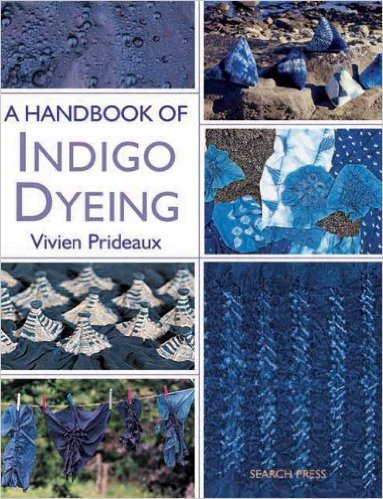
The Art and Craft of Natural Dyeing: Traditional Recipes for Modern Use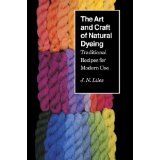
by J.N. Liles
Vat dyes are an ancient class of dye, based on the original natural dye, Indigo, which is now produced synthetically, and its close chemical relative, historic Tyrian Purple. Both cotton and wool, as well as other fibers, can be dyed with vat dyes.
"Vat dyeing" means dyeing in a bucket or vat. It can be done whenever a solid even shade, the same color over the entire garment, is wanted, using almost any dye, including fiber reactive dye, direct dye, acid dye, etc. The opposite of vat dyeing is direct dye application, such as, for example, tie dyeing. "Vat dyes" are a special class of dyes that work with a special chemistry.
Most vat dyes are less suitable than, say, fiber reactive dyes, for the home dyer, as they are difficult to work with; they require a reducing agent to solubilize them. The dye is soluble only in its reduced (oxygen-free) form. The fiber is immersed repeatedly in this oxygen-free dyebath, then exposed to the air, whereupon the water-soluble reduced form changes color as oxygen turns it to the water-insoluble form. Indigo is an example of this dye class; it changes from yellow, in the dyebath, to green and then blue as the air hits it.
Vat dyes must be solubilized before use. They are not soluble in their oxidized form. The process requires the use of lye (sodium hydroxide), which must be used with due care, including the use of goggles.
Indigo is subject to major crocking (rubbing off of the dye onto other items) unless it is applied carefully. This means use a weaker dyebath, and dipping many times, rather than a single strong dipping. Indigo may be applied with essentially the same recipes as other vat dyes, or it may be applied with traditional fermenting baths, which are more finicky but which use easier-to-acquire ingredients.
To solubilize vat dyes, use a mixture of sodium hydroxide (caustic soda, or lye) and the reducing agent sodium dithionite (also known as sodium hydrosulfite, and found in Rit Color Remover). Ann Milner's recipe for dyeing 100 gram of fabric, in her Ashford Book of Dyeing, calls for 5 grams of dye, 10 grams of sodium hydroxide, and 10 grams of sodium hydrosulfite. The dye is pasted up with a small quantity of water, as usual for any dye, then the lye is dissolved in cold water and added, and the sodium hydrosulfite is sprinkled on top of the dye mixture to dissolve it. Milner suggests using twice as much sodium hydroxide and sodium hydrosulfite for blue or black vat dyes. The fabric or yarn is covered with water and wetted out separately, and then the dissolved dye is added. after fifteen minutes, the fabric is removed from the dyebath, exposed to air to allow the dye to oxidize, and then washed.
Online instructions: Aljo Dye, which sells a huge range of different vat dyes, provides directions for the application of their Zymo-Fast Vat Dyes. PRO Chemical & Dye, which sells some vat dyes, provides instructions online for Immersion Dyeing using PRO Vat Dyes. Kraftkolour provides instructions for using vat dyes in the form of a downloadable PDF document. Batik Oetoro also supplies a page of online instructions for using vat dyes.
Books: For books with more detailed instructions , see "More Information on Vat Dyes", below.
It's inconvenient to have to reduce your vat dyes in order to dissolve them. However, it is impractical to sell the reduced form of the dye, because it will oxidize in the air, back to the insoluble form. The solution to this problem is for the manufacturer to convert the soluble leuco acid form of the dye to the leuco ester, such as by reacting the leuco acid with sulfuric acid. The leuco form of this solubilized dye can be regenerated by removing the ester group chemically (with sodium nitrite in dilute sulfuric acid) or by the action of light. The drawbacks of solubilized leuco esters are their greater expense and their poorer uptake into the fiber, which results in paler shades. (This is explained in Wilfred Ingamells' book, Colour for Textiles: A User's Handbook, which is available from the Society of Dyers and Colourists for £9.)
Inko-dye is a brand of solubilized reduced vat dye esters, as described above, which uses light rather than oxygen to 'fix' the dye, with a inspirationally wide variety of possible effects. Instead of being applied in an oxygen-free bath and being developed in the fabric by exposure to oxygen, Inkodyes are painted onto the fabric and then developed by light. Unlike the Setacolor fabric paints used in sun printing, Inkodyes are true dyes. (A dye actually itself attaches to the fabric; fabric paint includes a glue-like binder, which imparts a stiffer feeling to the fabric.) The process is somewhat difficult and more suited for an experienced dyer, rather than for a novice. The only retail source of Inkodye that I can find is Dharma Trading Company. There are many textile industry sources for Indigosol dyes, which are the same type of dye used in Inkodye, but these large companies tend to be less suitable for small-scale users such as textile artists.
Suda House's book, Artistic Photographic Processes, gives detailed step-by-step instructions in how to apply the dyes to fabric and then develop them. See my page on How to Dye and Paint Fabric with Light for more details on Inkodyes (scroll down to the second section). Other books with some information on Inkodyes include Jean Ray Laury's book, Imagery on Fabric, and Dianne Epps' book, The Chemistry of Vat Dyes
.
Vat dyes are, as a class, the most light-fast of all dyes. However, not all individual vat dyes are equally resistant to light. The following are lightfastness ratings for the unmixed vat dyes sold by one popular supplier:
| Color Name | Colour Index name | lightfastness rating (out of 8) |
|---|---|---|
| VD01 Yellow | vat yellow 2 | 5 |
| VD02 Orange | vat orange 2 | 5 |
| VD03 Red | vat red 13 | 7 |
| VD04 Blue | vat blue 6 | 7-8 |
| VD08 Violet | vat violet 1 | 6 |
You may view the entire text of the one-paragraph Encyclopedia Britannica Online Encyclopedia Article on vat dye if you access it via this link.
Dianne Epps' book, The Chemistry of Vat Dyes, from her "Palette of Color" Series, gives some introductory-level information suitable for a high school laboratory.
Ann Milner's Ashford Book of Dyeing contains two pages with detailed recipes for using both regular and solubilized (Indigosol) vat dyes for immersion dyeing.
Faithe Shaw Nunneley's handweaving book Thrums includes a one-page appendix with detailed instructions on using Inkodyes to dye yarn.
The best published source of information on vat dyes for textile artists is Holly Brackman's The Surface Designer's Handbook: Dyeing, Printing, Painting, and Creating Resists on Fabric, which includes an extensive chapter with many recipes for using vat dyes, in addition to Inkdyes, along with beautiful photographs of examples of clothing dyed and discharged with vat dyes.
John Shore's Cellulosics Dyeing, published in 1995, contains vastly more information about vat dyes, their chemistry, and their application, all from the viewpoint of the textile industry. You can order this book directly from the website for the Society of Dyers and Colourists in the UK. It is not as detailed as Ramaiah Muthyala's Chemistry and Applications of Leuco Dyes, since Cellulosics Dyeing covers all of the other classes of dyes used on cellulose fibers as well. Muthyala includes chapters on photochromism and thermochromism, as well as detailed information on the synthesis of vat dyes, all at a level that is rather too technical to be of interest to the textile artist. If you find these books to be beyond your budget, don't forget about the existance of Interlibrary Loan services at your local public library.
All of the pages on this site are copyright © 1998-2026 Paula E. Burch, Ph.D.
Last updated: March 31, 2016
Page originally created: May 4, 2003
Downloaded on: Friday, January 02, 2026